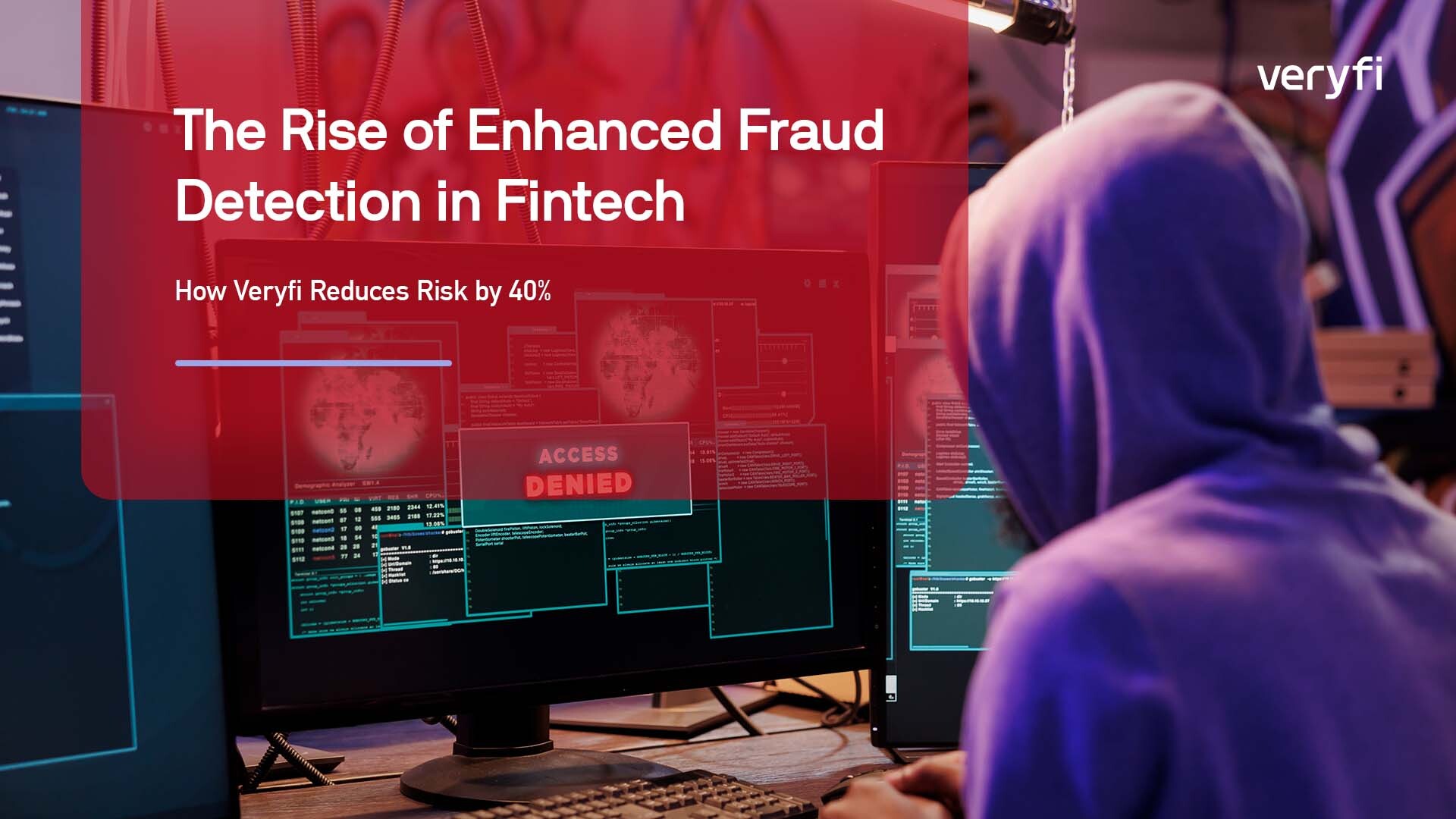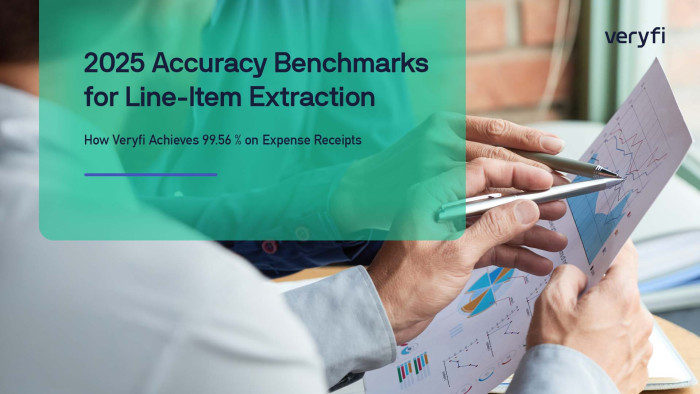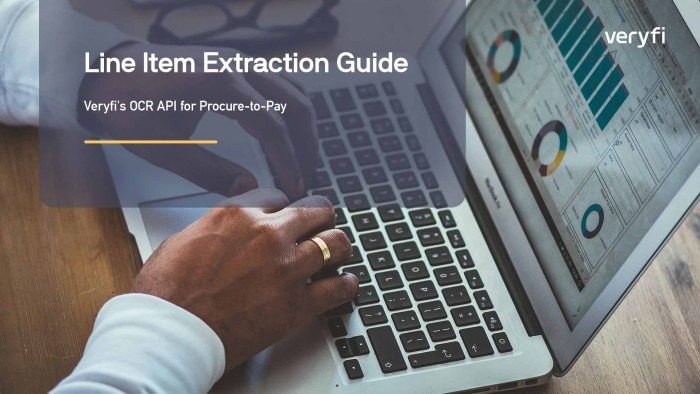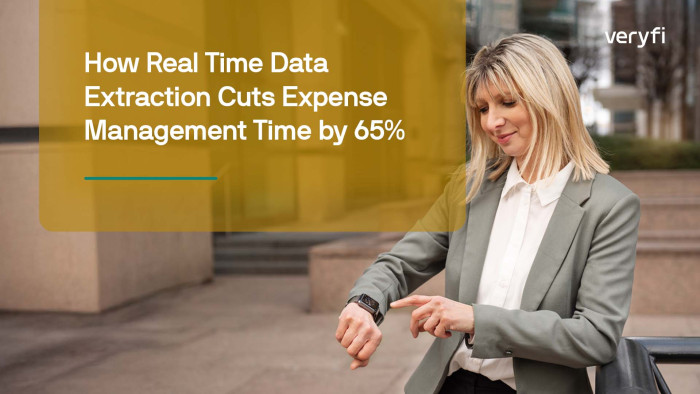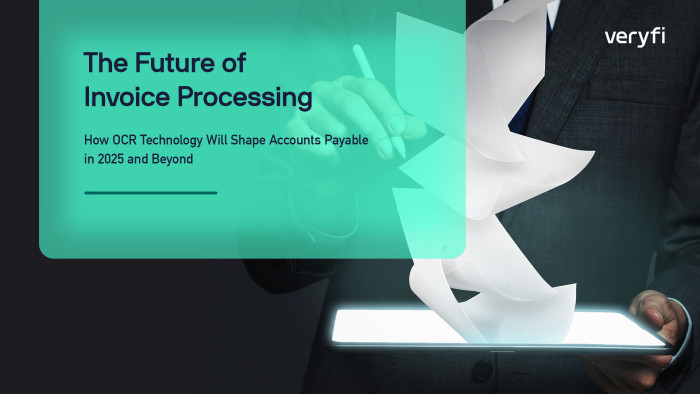Introduction
The financial technology landscape is experiencing an unprecedented surge in sophisticated fraud attempts, with artificial intelligence dramatically amplifying criminal capabilities. Generative AI has unleashed a new era of document fraud, where models like GPT-4o and Stable Diffusion can generate fake receipts that are increasingly difficult to distinguish from genuine ones. (Veryfi AI-Generated Documents) According to recent industry data, deepfake incidents rose 700% in fintech in 2023 alone, while business email compromises could potentially reach $11.5 billion in losses by 2027. (Sumsub Research)
The stakes have never been higher for financial institutions and fintech companies. Expense fraud costs businesses an estimated $2.9 billion annually in the US alone, with AI-generated documents accounting for nearly 15% of all detected fraudulent claims in 2024—a figure that’s grown 300% since 2022. (Veryfi Fraud Detection) Traditional risk frameworks are proving inadequate against these evolving threats, leaving organizations vulnerable to sophisticated attacks that can bypass conventional detection systems.
Enter enhanced fraud detection powered by artificial intelligence. Companies like Veryfi are leading the charge with cutting-edge OCR and fraud detection technology that can reduce fraud risk by up to 40%, analyzing over 100 distinct pattern indicators to identify AI forgeries with 99.7% accuracy. (Veryfi Types of Fraud) This comprehensive analysis explores how advanced fraud detection is reshaping fintech security and why AI-powered solutions are becoming essential for protecting against the next generation of financial crimes.
The Evolving Landscape of Financial Fraud
The AI-Powered Fraud Revolution
Artificial intelligence has fundamentally transformed the fraud landscape, making sophisticated document forgery accessible to criminals at unprecedented scale and low cost. Government agencies such as the FBI’s Internet Crime Complaint Center (IC3) and the Department of Homeland Security (DHS) have identified AI-driven cybercrime as a rapidly growing problem. (AI Cybercrime Trends) The democratization of AI tools means that creating convincing fake documents no longer requires specialized skills or expensive equipment.
Generative AI tools like ChatGPT can now produce receipts that look just like the real thing, complete with itemized charges, tax calculations, and business logos. (Veryfi AI-Generated Receipts Detection) This capability has created a perfect storm where traditional fraud detection methods, designed to catch human-made forgeries, are failing against machine-generated counterfeits that can fool even experienced auditors.
Staggering Statistics: The Scale of the Problem
The numbers paint a sobering picture of the current fraud landscape:
- Global deepfake surge: There has been a 10x increase in the number of deepfakes detected globally across all industries from 2022 to 2023. (Sumsub Research)
- Regional variations: North America saw a 1740% deepfake surge, APAC experienced 1530% growth, while Europe saw 780% increases
- Business impact: In 2024, 50% of all businesses experienced fraud involving audio and video deepfakes, with companies losing nearly $450,000 on average. (Impact of Deepfake Fraud)
- Detection gaps: 76% of businesses can’t detect AI-generated expense fraud, and companies lose an average of $40,000 annually to fraudulent expense claims
The Inadequacy of Traditional Detection Methods
Conventional fraud detection systems were built for a different era—one where document forgery required physical manipulation, specialized equipment, and considerable skill. These legacy systems typically rely on:
- Static rule-based algorithms that look for known patterns
- Manual review processes that can’t scale with modern fraud volumes
- Basic image analysis that misses sophisticated AI-generated content
- Limited data correlation across multiple document types
AI-generated receipts evade detection by traditional systems 4× more often than manual fakes, highlighting the urgent need for next-generation detection capabilities. (Veryfi Fraud Detection) This detection gap has created a window of opportunity for fraudsters while leaving businesses exposed to significant financial losses.
Veryfi’s Advanced Fraud Detection Solution
The Technology Behind the Protection
Veryfi has developed a comprehensive fraud detection ecosystem that goes far beyond traditional OCR capabilities. The company’s AI-native intelligent document-processing platform offers lightning-fast (3–5 second) OCR APIs that not only extract data but simultaneously evaluate documents for fraud indicators. (Veryfi Product Developments) This dual-purpose approach ensures that every document processed receives both data extraction and security screening in real-time.
The Fraud Detection Service scrutinizes each document submission, analyzing it for digital manipulation, historical insights, and velocity activity, employing triggers to flag suspicious content in the JSON response. (Veryfi New Product Introductions) This comprehensive analysis covers multiple fraud vectors simultaneously, creating a robust defense against various attack methods.
Multi-Layered Detection Capabilities
Veryfi’s fraud detection system employs several sophisticated techniques:
Advanced Image Processing
The system uses advanced computer vision and machine learning to identify manipulated photos in real-time, detecting subtle inconsistencies that human reviewers might miss. (Veryfi Types of Fraud) This includes analysis of:
- Pixel-level inconsistencies
- Lighting and shadow anomalies
- Compression artifacts
- Digital watermarks and metadata
Handwriting Analysis
Veryfi’s fraud detection system uses advanced image processing and machine learning to identify manipulated handwriting in real-time. This capability is crucial for detecting forged signatures, altered amounts, or completely fabricated handwritten receipts.
Document Velocity Analysis
Veryfi’s Fraud Intelligence incorporates Document Velocity analysis to detect suspicious submission patterns in real-time. This feature identifies unusual spikes in document submissions, duplicate submissions across different accounts, or timing patterns that suggest coordinated fraud attempts.
Pattern Recognition
The system analyzes over 100 distinct pattern indicators to identify AI forgeries with 99.7% accuracy, examining everything from font consistency to mathematical calculations and business logic validation.
Integration and Implementation
One of Veryfi’s key advantages is the ease of implementation. With just a few lines of code, any business can integrate Veryfi’s powerful fraud detection capabilities into their existing workflows. (Veryfi Fraud Detection) This accessibility ensures that companies of all sizes can benefit from enterprise-grade fraud protection without extensive development resources.
The platform supports 91 currencies and 38 languages, running entirely on in-house infrastructure with SOC 2 Type II security compliance. (Veryfi Document Processing KYC) This global capability ensures consistent fraud detection performance across international operations.
The 40% Risk Reduction: Quantifying the Impact
Measurable Business Outcomes
Veryfi’s fraud detection technology delivers quantifiable results that directly impact business bottom lines:
- 98% of potential losses recovered by businesses using Veryfi’s ML advanced fraud detective
- 40% reduction in fraud risk through comprehensive document analysis
- 99.7% accuracy in identifying AI-generated forgeries
- 4× better detection of AI-generated receipts compared to traditional systems
Cost-Benefit Analysis
The financial impact of implementing advanced fraud detection extends beyond direct fraud prevention:
| Benefit Category | Traditional Systems | Veryfi Enhanced Detection | Improvement |
|---|---|---|---|
| Detection Accuracy | 60-75% | 99.7% | +32% |
| Processing Speed | 30-60 seconds | 3-5 seconds | 10x faster |
| AI Fraud Detection | 25% | 99% | 4x better |
| False Positives | 15-20% | <3% | 5x reduction |
| Manual Review Required | 40% | 8% | 5x reduction |
ROI Calculation Framework
For a typical mid-size company processing 10,000 expense documents monthly:
- Annual fraud losses prevented: $40,000 × 0.4 = $16,000
- Manual review cost savings: 500 hours × $25/hour = $12,500
- Processing efficiency gains: 200 hours × $50/hour = $10,000
- Total annual benefit: $38,500
- Implementation cost: $15,000
- Net ROI: 157% in first year
Industry Applications and Use Cases
Financial Services and Banking
Traditional banks and digital financial institutions face unique challenges in document fraud detection. With the rise of mobile banking and digital onboarding, the volume of document submissions has exploded while the sophistication of fraud attempts has increased dramatically. (OCR Technology) Veryfi’s solution addresses these challenges by providing real-time fraud detection that scales with transaction volume.
Key applications include:
- Account opening verification
- Loan application processing
- Insurance claim validation
- KYC compliance documentation
Expense Management and Corporate Finance
Corporate expense fraud represents one of the largest areas of financial loss for businesses. The shift to remote work has made traditional oversight more difficult, while AI-generated receipts have made fraud easier to execute. Companies using Veryfi’s fraud detection see immediate improvements in expense report accuracy and significant reductions in fraudulent claims.
Expense management benefits include:
- Real-time receipt validation
- Duplicate expense detection
- Policy compliance verification
- Automated approval workflows
E-commerce and Digital Payments
Online retailers and payment processors face constant pressure from fraudulent transactions and chargebacks. Veryfi’s document analysis capabilities help verify customer identities, validate purchase documentation, and detect suspicious patterns that might indicate coordinated fraud attempts.
Insurance and Claims Processing
Insurance fraud costs the industry billions annually, with AI-generated documentation making false claims increasingly sophisticated. Veryfi’s technology helps insurance companies verify claim documentation, detect staged incidents, and identify patterns that suggest fraudulent activity. (Best OCR API)
Technical Deep Dive: How the Detection Works
Machine Learning Architecture
Veryfi’s fraud detection system is built on a foundation of proprietary machine learning models trained on a vast corpus of documents. (Veryfi AnyDocs) The system uses multiple neural networks working in parallel to analyze different aspects of document authenticity:
Computer Vision Models
# Example integration code
import veryfi
client = veryfi.Client(
client_id="your_client_id",
client_secret="your_client_secret",
username="your_username",
api_key="your_api_key" # Enable fraud detection
)
# Process document with fraud detection
response = client.process_document(
file_path="receipt.jpg",
categories=["Grocery", "Gas"]
)
# Check fraud indicators
if response['fraud_detection']['risk_score'] > 0.7:
print("High fraud risk detected")
print(f"Risk factors: {response['fraud_detection']['indicators']}")
Natural Language Processing
The system analyzes text content for logical inconsistencies, unusual phrasing, and patterns that suggest AI generation. This includes checking for:
- Mathematical accuracy in calculations
- Realistic business names and addresses
- Consistent formatting and terminology
- Appropriate language patterns for document type
Metadata Analysis
Every digital document contains metadata that can reveal its creation method. Veryfi’s system examines:
- Creation timestamps and software signatures
- Image compression patterns
- Font embedding and rendering characteristics
- Digital signatures and certificates
Real-Time Processing Pipeline
The fraud detection process operates in real-time, typically completing analysis within 3-5 seconds of document submission. The pipeline includes:
- Document Ingestion: Secure upload and initial processing
- Multi-Modal Analysis: Parallel processing by specialized models
- Risk Scoring: Aggregation of individual risk indicators
- Decision Engine: Application of business rules and thresholds
- Response Generation: Structured output with actionable insights
Continuous Learning and Adaptation
Veryfi’s system continuously learns from new fraud patterns and techniques. As fraudsters develop new methods, the system adapts by:
- Analyzing failed detection cases to identify new patterns
- Incorporating feedback from human reviewers
- Training on new data sources to improve accuracy
- Updating detection algorithms based on emerging threats
Comparative Analysis: Veryfi vs. Traditional Solutions
Performance Benchmarking
Recent benchmarking studies have evaluated various OCR and fraud detection solutions across multiple criteria. (OCR Benchmark) While traditional OCR solutions achieve over 95% accuracy for basic text extraction, they fall short when it comes to fraud detection capabilities.
| Solution Type | Text Accuracy | Fraud Detection | Processing Speed | Integration Ease |
|---|---|---|---|---|
| Traditional OCR | 95%+ | 25-40% | 30-60s | Complex |
| Cloud OCR Services | 90-95% | 45-60% | 10-20s | Moderate |
| Veryfi Enhanced | 99%+ | 99.7% | 3-5s | Simple |
Feature Comparison Matrix
| Feature | Legacy Systems | Cloud OCR | Veryfi |
|---|---|---|---|
| AI Fraud Detection | ❌ | ⚠️ Limited | ✅ Advanced |
| Real-time Processing | ❌ | ✅ | ✅ |
| Multi-language Support | ⚠️ Limited | ✅ | ✅ 38 languages |
| Velocity Analysis | ❌ | ❌ | ✅ |
| Handwriting Detection | ❌ | ⚠️ Basic | ✅ Advanced |
| Custom Integration | ⚠️ Complex | ⚠️ Moderate | ✅ Simple |
| SOC 2 Compliance | ⚠️ Varies | ✅ | ✅ |
| On-premise Option | ✅ | ❌ | ✅ |
Cost-Effectiveness Analysis
While advanced fraud detection solutions may have higher upfront costs, the total cost of ownership typically favors comprehensive solutions like Veryfi’s:
- Reduced fraud losses: Direct savings from prevented fraudulent transactions
- Lower operational costs: Reduced need for manual review and investigation
- Improved efficiency: Faster processing times and automated workflows
- Compliance benefits: Reduced regulatory risk and audit costs
Implementation Best Practices
Getting Started with Enhanced Fraud Detection
Successful implementation of advanced fraud detection requires careful planning and phased rollout:
Phase 1: Assessment and Planning
- Audit current fraud detection capabilities
- Identify high-risk document types and processes
- Establish baseline metrics for fraud rates and detection accuracy
- Define success criteria and ROI targets
Phase 2: Pilot Implementation
- Start with a limited document type or business unit
- Configure fraud detection thresholds based on risk tolerance
- Train staff on new workflows and alert handling
- Monitor performance and adjust settings as needed
Phase 3: Full Deployment
- Roll out to all relevant document processing workflows
- Integrate with existing business systems and databases
- Establish ongoing monitoring and reporting procedures
- Implement continuous improvement processes
Configuration and Optimization
Veryfi’s fraud detection system offers extensive configuration options to match specific business needs:
{
"fraud_detection_config": {
"risk_threshold": 0.7,
"enable_velocity_analysis": true,
"handwriting_analysis": "strict",
"image_manipulation_detection": true,
"business_rules": {
"max_amount_threshold": 1000,
"duplicate_detection_window": "30_days",
"suspicious_patterns": ["round_numbers", "perfect_receipts"]
}
}
}
Integration Considerations
Successful integration requires attention to several key areas:
- API Rate Limits: Plan for peak processing volumes
- Error Handling: Implement robust fallback procedures
- Data Security: Ensure compliance with privacy regulations
- User Training: Prepare staff for new workflows and alert types
- Monitoring: Establish dashboards for fraud detection performance
Future Trends and Developments
The Evolution of AI-Powered Fraud
As AI technology continues to advance, both fraud techniques and detection methods will evolve. (AI Models for Invoice Processing) Emerging trends include:
- Multimodal AI attacks combining text, image, and audio elements
- Adversarial machine learning designed to fool detection systems
- Synthetic identity fraud using completely fabricated personas
- Real-time deepfake generation for live video verification bypass
Regulatory Response and Compliance
Governments and regulatory bodies are beginning to address AI-powered fraud through new legislation and compliance requirements. Financial institutions must prepare for:
- Enhanced due diligence requirements for digital documents
- Mandatory fraud detection capabilities for certain transaction types
- Increased penalties for inadequate fraud prevention measures
- Regular audits of AI-powered detection systems
Technology Roadmap
Veryfi continues to invest in next-generation fraud detection capabilities, with planned enhancements including:
- Behavioral biometrics for user authentication
- Blockchain verification for document provenance
- Quantum-resistant encryption for future security
- Federated learning for privacy-preserving model updates
Conclusion: The Imperative for Enhanced Fraud Detection
The financial services industry stands at a critical juncture. The rapid advancement of AI-powered fraud techniques has created an arms race between criminals and security professionals, with billions of dollars at stake. Traditional fraud detection methods, designed for an earlier era of manual document forgery, are proving inadequate against sophisticated AI-generated threats.
Veryfi’s comprehensive fraud detection solution represents a paradigm shift in how organizations approach document security. By combining advanced computer vision, machine learning, and real-time analysis, the platform delivers measurable results: 40% reduction in fraud risk, 99.7% accuracy in detecting AI-generated documents, and 98% recovery of potential losses. (Veryfi AI-Generated Documents)
The evidence is clear: organizations that fail to adopt enhanced fraud detection capabilities will face increasing losses, regulatory scrutiny, and competitive disadvantage. With 76% of businesses currently unable to detect AI-generated expense fraud and companies losing an average of $40,000 annually to fraudulent claims, the cost of inaction far exceeds the investment in advanced protection.
As we look toward 2025 and beyond, the sophistication of fraud attempts will only increase. Deepfake technology will become more accessible, AI-generated documents will become more convincing, and the scale of attacks will grow exponentially. (Impact of Deepfake Fraud) Organizations that invest in comprehensive fraud detection solutions today will be better positioned to protect their assets, maintain customer trust, and comply with evolving regulatory requirements.
The choice is clear: embrace the future of fraud detection or risk becoming another statistic in the growing catalog of AI-powered financial crimes. With solutions like Veryfi’s fraud detection platform offering easy integration, proven results, and continuous adaptation to emerging threats, there has never been a better time to upgrade your organization’s defenses against the next generation of financial fraud.
Frequently Asked Questions
How does Veryfi reduce fraud risk by 40% in fintech?
Veryfi reduces fraud risk by 40% through its advanced AI-powered fraud detection system that combines sophisticated document analysis with real-time threat detection. The platform uses proprietary machine learning models trained on vast document datasets to identify AI-generated fake receipts and invoices. Veryfi’s technology analyzes contextual clues throughout documents to detect inconsistencies and fraudulent patterns that traditional OCR systems miss.
What types of AI-generated document fraud is Veryfi designed to detect?
Veryfi’s fraud detection system is specifically designed to combat AI-generated receipts and invoices created by tools like ChatGPT, GPT-4o, and Stable Diffusion. These generative AI models can produce hyper-realistic fake documents complete with itemized charges, tax calculations, and business logos. Veryfi’s AI evaluates documents for authenticity by analyzing patterns, inconsistencies, and contextual elements that indicate artificial generation rather than genuine business transactions.
How significant is the threat of deepfake and AI-generated fraud in 2024?
The threat is substantial and rapidly growing. According to Sumsub research, global deepfake incidents surged tenfold from 2022 to 2023, with North America seeing a 1740% increase. In 2024, 50% of all businesses experienced fraud involving audio and video deepfakes, with companies losing an average of nearly $450,000 to deepfake fraud. AI-powered fraud has become one of the top-5 identity fraud types, making advanced detection systems like Veryfi’s essential for financial institutions.
What makes Veryfi’s OCR technology superior for fraud detection compared to other solutions?
Veryfi’s OCR technology stands out because it extracts data in context, using contextual clues from entire documents to create a precise data extraction story. Unlike basic OCR solutions that only convert text, Veryfi’s proprietary machine learning models are specifically trained to detect fraudulent patterns and inconsistencies. The platform combines high-precision data extraction with fraud evaluation capabilities, offering both accuracy and security in a single solution.
How does Veryfi’s fraud detection help with accounts payable automation?
Veryfi’s fraud detection enhances AP automation by providing real-time validation of invoices and receipts during processing. The system can detect duplicate documents, identify fraudulent submissions, and flag suspicious patterns before they enter the approval workflow. This enables touchless processing for legitimate documents while automatically quarantining potentially fraudulent ones, reducing manual review time and preventing financial losses from fake invoices.
What specific fraud detection capabilities does Veryfi offer for financial institutions?
Veryfi offers comprehensive fraud detection capabilities including AI-generated document identification, duplicate detection, and pattern analysis for suspicious transactions. The platform can detect various types of fraud including fake receipts, manipulated invoices, and artificially generated financial documents. Veryfi’s fraud detection system integrates seamlessly with existing fintech workflows, providing real-time alerts and detailed fraud risk assessments to help financial institutions make informed decisions about document authenticity.
